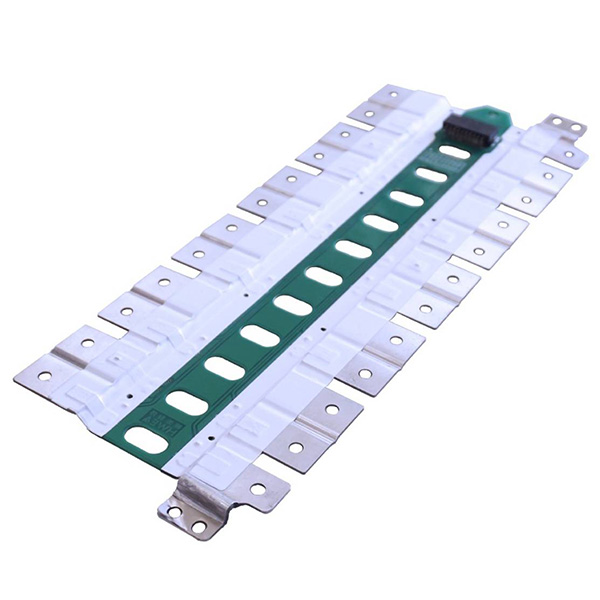Laminated Busbar for Electric Car / Automative
A laminated busbar for an electric car refers to a component used in the electrical system of the vehicle. A busbar is a metallic strip or bar that conducts electricity within a system. It serves as a central point for the distribution of electrical power to various components, such as batteries, motors, and other electronic devices. In the context of an electric car, a laminated busbar is designed to efficiently and safely distribute electrical power within the vehicle's electrical system. It can handle the high currents and voltages associated with electric vehicle powertrains. The laminated construction helps manage heat dissipation, reduces electrical losses, and provides a compact and lightweight solution.
- Insulation resistance20M Ω DC/1000V
- Parasitic inductance15nH/m
- Temperature rise≤30K
- Working temperature-40~105℃
Key Features of Laminated Busbars for Electric Cars:
Laminated busbars are crucial in electric vehicles (EVs) vital in power distribution and management. They offer several advantages over traditional busbars, making them an essential part of EV design.- High Current Carrying Capacity: These busbars can handle high currents, which is essential for the high-power demands of EV motors and battery packs. This capability ensures efficient power transfer and minimizes voltage drop.
- Low Inductance: The layered structure of laminated busbars minimizes inductance, reducing the impedance to current flow. This property is crucial for minimizing power losses and maintaining consistent voltage levels.
- Compact and Space-Efficient: Busbars are compact and lightweight compared to traditional busbars, allowing space optimization within the limited confines of EV battery packs and powertrain systems.
- Flexible Design: They can be customized and shaped to fit specific design requirements, enabling them to navigate complex geometries and connect various components within the EV system.
- Enhanced Thermal Management: The layered construction of laminated busbars facilitates efficient heat dissipation, preventing overheating and ensuring the longevity of electrical components.
- High Reliability and Durability: Laminated busbars are manufactured with high-quality materials and robust construction methods, ensuring their reliability and resistance to harsh environmental conditions.
- Reduced Electromagnetic Interference (EMI): The insulating layers in busbars minimize electromagnetic interference, preventing disruptions to sensitive electronic systems within the EV.
Applications of Laminated Busbars in Electric Cars:
- Battery Pack Connection: The busbars connect the individual battery cells within the EV battery pack, providing a high-current, low-impedance pathway for power transfer.
- Motor Connection: These busbars connect the battery pack to the electric motor, delivering the necessary power for vehicle propulsion.
- Power Distribution Network: Busbars form the backbone of the EV's power distribution network, distributing power from the battery pack to various electrical components, including the inverter, charge controller, and auxiliary systems.
- Hybrid Electric Vehicles (HEVs): Laminated busbars play a similar role in hybrid electric vehicles (HEVs), managing power distribution between the battery pack, electric motor, and internal combustion engine.
- Fuel Cell Electric Vehicles (FCEVs): Laminated busbars are also used in fuel cell electric vehicles (FCEVs), distributing power from the fuel cell stack to the electric motor and other electrical components.
